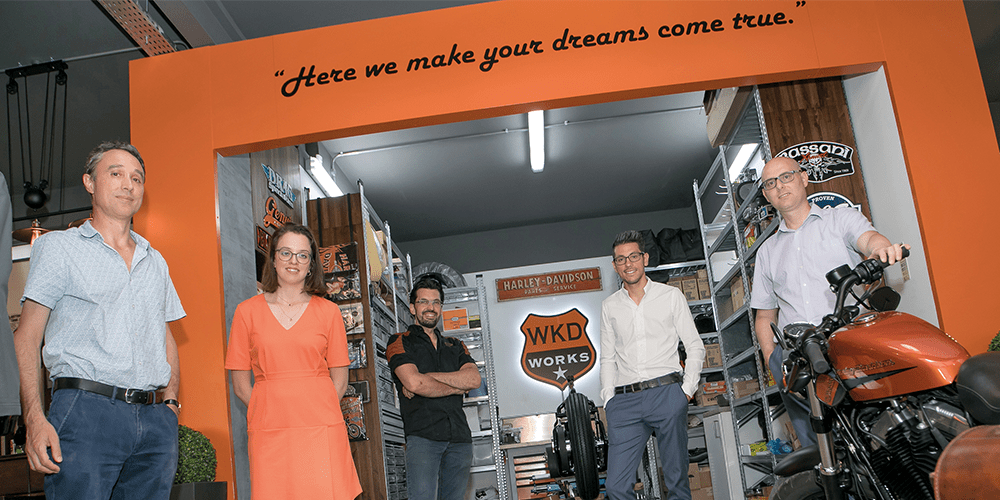Motorcycle riders are often seen as risk takers, branded as transportation scapegoats. Until now. Prof. Ing. Philip Farrugia and his team at the University of Malta are shedding light on the issue of road safety and critical needs for keeping the community safe and reducing deaths.
Motorcycles are exciting. They offer a compact, agile, and fuel efficient means of personal transportation, which makes them very popular. According to the National Statistics Office (NSO), the number of motorcycles and e-bicycles increased by 11% last year as drivers struggled to outsmart road congestion.
Yet, motorcycles are dangerous. Despite only making up 7% of all licensed road vehicles in Malta, according to the NSO, they were involved in 33% of fatal accidents registered in 2018. Motorbikes leave the rider more exposed to risk, when compared to cars. The riders’ movement and positioning have a much larger impact on their bikes. If the rider tries to adopt an unnatural position, the chances of making a driving manoeuvre error will increase by nine times, leading to accidents, the Motorcycle Safety Foundation warns.
There is disagreement on the common causes of motorcycle accidents. Some argue that most are caused by over-speeding, others claim that they are due to the rider’s inexperience. But while the Directorate-General for Mobility and Transport of the European Commission confirms that there is a relationship between accident risk and speed, there is more to this than meets the eye. A few years ago, most accidents happened during weekends when motorcyclists would be riding for leisure and over-speeding. Nowadays, Malta is experiencing numerous motorcycle accidents on weekdays, indicating that with the rise in traffic density, accidents are more likely to stem from carelessness and disregard for traffic regulations.
Despite only making up 7% of all licensed road vehicles in Malta, according to the NSO, they were involved in 33% of fatal accidents registered in 2018.
To reduce the risk of accidents, we have to make sure motorcycle riders are skilled, as well as comfortable and concentrated while riding. It would also help if we could bolster riders’ attachment to their bikes as this may motivate them to take better care of their vehicles and generally be more cautious when driving.
On the manufacturers’ end, designers need to listen to what riders and stakeholders have to say on current motorcycle challenges. Focussing on unmet needs is crucial for developing innovative solutions.
To improve novice drivers’ skills and find the best geometrical fit for them, the Department of Industrial and Manufacturing Engineering and the Department of Systems and Control Engineering (UM), in collaboration with WKD Works Ltd, have joined forces to develop a comprehensive motorcycle-ride virtual simulator. This is the essence of the RIDE+SAFE project, which will simulate Maltese traffic and accident scenarios. Using a novel jig immersed in a Virtual Reality (VR) environment, the simulator will improve riders’ handling and control of their vehicle. Eventually this will lead to guidelines for motorcycle designers and engineers to improve the safety of their products.

Adrian Vella, Ing. Sean Agius, Prof. Ing. Philip Farrugia
To ensure that any patterns and trends detected are consistent, the research team chose methods that offered a mix of depth and scope. Firstly, one hundred and thirty motorcycle riders in Malta were asked to participate in a survey. We learnt that most of the riders experienced pain in the upper part of their body, particularly in their neck. This was followed by wrists, arms, back, and shoulders.
Consequently, these riders suggested that the motorcycle’s main features that have an impact on the control of their riding are the handlebar and seat adjustments, followed by the shock absorbers adjustment.
Predictably, the survey confirmed that a less experienced rider is more likely to have an accident when compared to experienced riders. On the other hand, interesting results emerged on the reasons why motorcyclists feel the need to make changes to their vehicle: 65% to increase comfort and safety, 21% to improve aesthetics, and 14% to enhance motorcycle performance.
We learnt that most of the riders experienced pain in the upper part of their body, particularly in their neck. This was followed by wrists, arms, back, and shoulders.
In parallel, relevant stakeholders were invited to participate in an open discussion (focus group session) to highlight current motorcycle problems which hinder safety and decrease riders’ comfort. Through thematic analysis of the data, we distilled customer needs. Some were identified as being essential to quality, having a high priority for the team designing the simulator. The most important feature was to have a simulator which can be realistic and tailored to the rider.
The design team then translated the needs gathered from the survey and focus group session into critical-to-quality engineering characteristics for the RIDE+SAFE simulator. The team is currently building a prototype at the UM. In the future, the simulator will be portable, and the ongoing usability study will show where to station these machines.
Ultimately, we hope to have the widest possible positive impact. To clear the bad reputation some bikers are unfairly burdened with, to help bikers get the vehicle of their dreams, and to keep people safe and alive.
The team is led by Prof. Ing. Philip Farrugia. Team members include Prof. Simon Fabri, Ing. Sean Agius, Denise Baldacchino, and motorcycle expert Adrian Vella. The three-year research project – RIDE+SAFE (R&I-2017-003T) is financed by the Malta Council for Science & Technology through the Technology Development Programme 2018.





Comments are closed for this article!